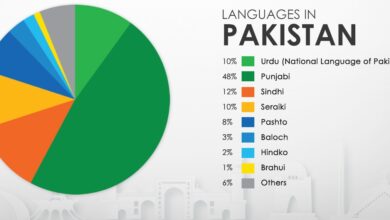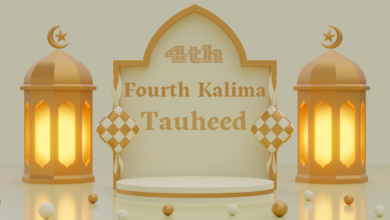
Introduction of Shah Abdul Latif Bhittai
Hazrat Shah Abdul Latif Bhittai (1689-1752) is one of the most respected Sufi poets and saints in Sindh, Pakistan’s history. His work has made him a venerated figure across the subcontinent because it is deeply rooted in love for God, human beings, and nature. His poetry incorporates spiritualism, mysticism, and the rich cultural heritage of Sindh.
The article goes on to discuss the life, education, historical background, and profound impact Hazrat Shah Abdul Latif Bhittai work had.
Early Life
Shah Abdul Latif was born in 1689 in Hala Haveli, a small village located near Bhit Shah town in Sindh province (now part of Pakistan). He came from an intensely spiritual Muslim family. In his formative years, he was influenced by his father Shah Habib who was well-versed with religion.
At that time he was still a child, but his deep religious inclination was already evident. He would often be found meditating or contemplating divine mysteries while seated next to lakes, mountainsides, or deserts. This attachment to nature and loneliness would later dominate his poetry.
Education
Abdul Shah Latif Bhittai education commenced from home. His father, who was well-versed in the Quran and Islamic traditions, gave him a religious education at an early age. He was interested in knowledge acquisition and wanted to be educated all the time. He not only studied religion but also became fluent in many languages including Sindhi, Arabic, and Persian.
He has demonstrated the high influence of previous Sufi poets including Rumi Maulana and Hazrat Shahbaz Qalandar. His love for knowledge led him to travel all over Sindh and its neighborhoods where he met scholars, Sufis, and saints. These travels further enriched his understanding of spirituality and mysticism which provided the basis for his poetry.
Historical Background of Shah Abdul Latif Bhittai
Hazrat Shah Abdul Latif Bhittai lived in an era where there were enormous socio-political changes taking place in the subcontinent. The Mughals who used to be a power to reckon with declined and various regional powers came up. Sindh itself was a land of mixed cultures and traditions ranging from Hinduism, and Buddhism to Islam. This presence of Sufism was a strong bridge between different communities and faiths.
In Shah Abdul Latif’s time, Sindh was under the rule of the Kalhora Dynasty which was a period of relative peace and prosperity marred by conflicts such as those with outside forces like the Mughals among other local feuds. This is when his message on love, unity, and spiritual awakening resonated with people deeply during this time. His poems provided healing and guidance for followers who wanted to rise above their worldly problems and find more meaningful connections with the godhead.
Hazrat Shah Abdul Latif Bhittai in His Works
Among the many works of Hazrat Shah Abdul Latif Bhittai, his greatest achievement is his poetry which is collected in his masterpiece called the Shah Jo Risalo (The Message of Shah). It consists of various verses that explore love, divine oneness, spirituality, and struggles of life. The poem is uncomplicated yet insightful as it employs allegorical fables and folklore to depict deep spiritual truths.
Often, Latif’s work is classified into Surs corresponding to particular Ragas. In this collection for instance there are 30 Surs each illustrating a unique setting or theme. Some of the famous ones include.
- Sur Marvi: The story of Marvi, a young Sindhi girl, who represents patriotism, love for one’s land, and resistance against oppression. The idea of yearning for the beloved is expressed in this poem by Latif and it symbolizes the soul’s longing for God.
- Sur Sohni: This tale is about Sohni, a young woman who risks her life for the sake of love by crossing a river every night to meet her lover. In Shah Latif’s poetry, devotion to Sohni stands as an emblematic representation of inner truth seekers journeying through all adversities toward ultimate knowledge.
- Sur Sasui: The story revolves around Sasui’s tireless search for her beloved Punhoon. For Latif, this quest is a metaphorical representation of the pursuit of God. Sasui hardships and determination are symbolic of the spiritual path where patience and perseverance are virtues that must be upheld.
- Sur Kalyan: This Sur deals with themes of joy and celebration often evoking images from nature and divine intervention/illegible/. It reveals Shah Latif’s belief in the beauty of creation and the ecstasy that accompanies spiritual awakening.
Hazrat Shah Abdul Latif Bhatti’s poetry is deeply rooted in the Sufi tradition, which emphasizes the internal journey towards God, love as the highest form of worship, and the unity of all existence. Most of his verses are a blend of Islamic teachings and local Sindhi folklore that makes them easily understandable by ordinary people.
Musical Tradition
Music was a vital part of Hazrat Shah Abdul Latif Bhattrai’s expression. He not only wrote poetry to be sung but also played the tambura, a stringed musical instrument, to accompany his recitations. His compositions were meant to be performed in specific ragas that corresponded to the different Surs of his poetry.
Even today, the traditional music of Sindh revolves around the recitation of Shah Latif’s verses, often performed by folk musicians known as faqirs. These performances are an essential part of Sindhi culture, particularly during the annual Urs at Shah Latif’s shrine in Bhit Shah, where devotees gather to honor his memory and celebrate his spiritual legacy.
Philosophy and Sufi Thought
Hazrat Shah Abdul Latif Bhittai philosophy was deeply influenced by the tenets of Sufism, which emphasizes the personal experience of the divine, love as the central path to God, and the purification of the soul through self-discipline and service. Latif’s poetry reflects these principles, with a focus on the internal spiritual journey rather than outward religious formalities.
He rejected materialism and worldly ambitions, preferring a life of simplicity and devotion. His work encourages readers to look beyond the external world and seek spiritual truths through self-awareness, love, and meditation on the divine.
The Shrine of Hazrat Shah Abdul Latif Bhittai
Hazrat Shah Abdul Latif Bhittai passed away in 1752 in Bhit Shah, where he spent the later part of his life. His shrine, located in Bhit Shah, Sindh, has become a significant pilgrimage site for people from all over Pakistan and beyond. The shrine is an architectural marvel, with its intricate tile work, domes, and calligraphy. It serves not only as a resting place for the poet-saint but also as a center of Sufi culture and spirituality.
The annual Urs celebration attracts thousands of devotees who gather to commemorate his life and teachings. During the Urs, recitations of his poetry and traditional Sindhi music performances take place, creating an atmosphere of devotion, joy, and spiritual reflection.
Spiritual Legacy and Influence
In addition to his poetry Hazrat Hazrat Shah Abdul Latif Bhittai left behind a lasting influence. He is considered a Sufi Saint whose thoughts have had a deep impact on spiritual as well as cultural life in Sindh. The shrine of Shah Latif is situated at Bhit Shah, Sindh province; it is visited by many people from different social backgrounds for pilgrimage. Every year there is a Urs festival which involves reciting his poetry and playing traditional Sindhi music among other activities.
Shah Latif’s message of love, tolerance, and spiritual devotion has transcended religious and cultural boundaries. He symbolizes not just Sindhi identity but also peace and reconciliation across divides. His works have been translated into several languages with successive generations being inspired by them all the time.
[1] Shah Latif never sought popularity or recognition all his life. [2] He was a humble person whose devotion to spiritual matters was evident in his lifestyle. [3] The poet spurned the royal courts and avoided politics, opting instead for the poor and marginalized. [4] Hazrat Hazrat Shah Abdul Latif Bhittai humility and adherence to the truth made him a venerated soul in Sindh.Conclusion
Shah’s work is an illustration of spirituality, love, and dedication to God. His poetry combines Sufi thought with Sindhi culture. Through poetic verses, timeless messages of love, unity as well as pursuit of the divine truth are conveyed Shah Latif. His memory still lives on amongst them those who are inquisitive about comprehending better their journey towards eternity





